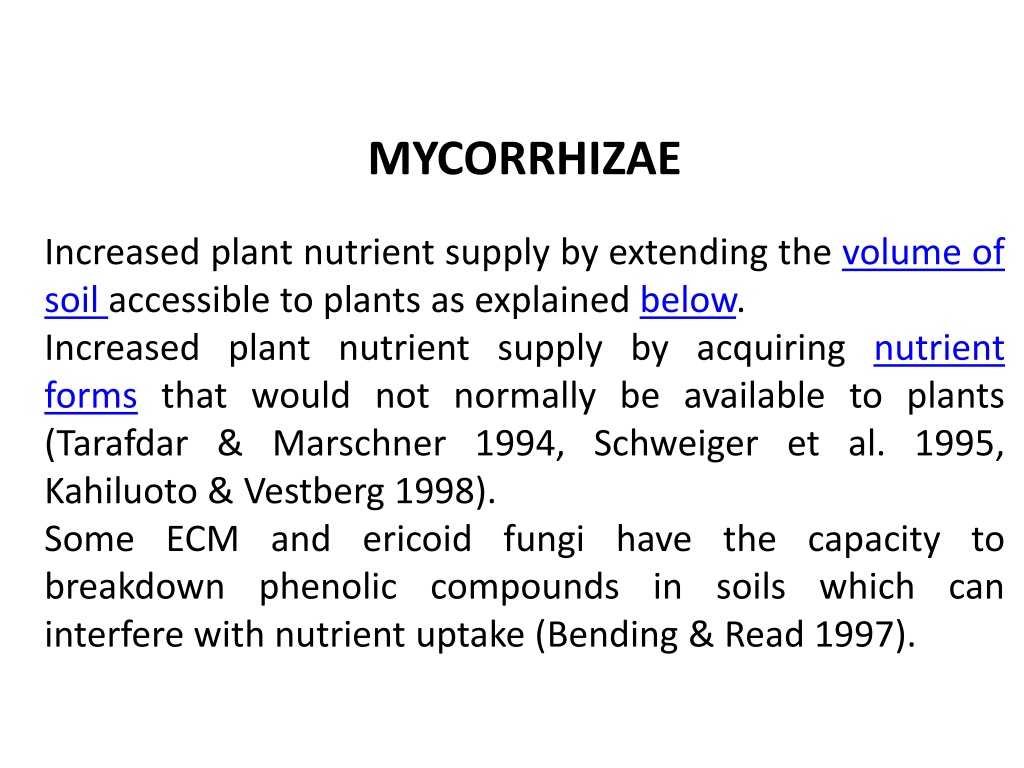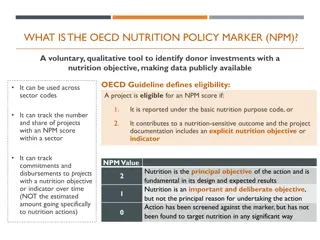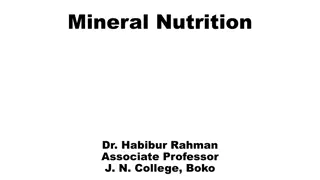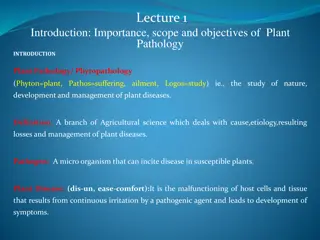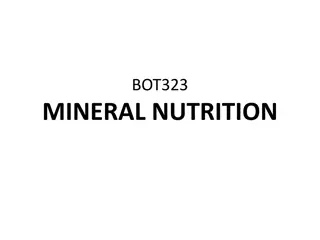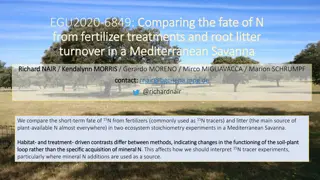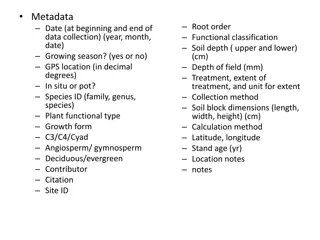Benefits of Mycorrhizae in Plant Nutrition and Ecosystem Health
Mycorrhizae play a crucial role in enhancing plant nutrient uptake, protecting against pests, improving plant growth, and fostering ecosystem stability. These symbiotic relationships provide various benefits such as increased nutrient supply, protection from pathogens, enhancement of plant growth forms, and support for ecosystem diversity through carbon transfer. Additionally, mycorrhizae serve as food sources and habitats for invertebrates, influence soil microbial populations, and contribute to soil structure.
Download Presentation

Please find below an Image/Link to download the presentation.
The content on the website is provided AS IS for your information and personal use only. It may not be sold, licensed, or shared on other websites without obtaining consent from the author. Download presentation by click this link. If you encounter any issues during the download, it is possible that the publisher has removed the file from their server.
E N D
Presentation Transcript
MYCORRHIZAE Increased plant nutrient supply by extending the volume of soil accessible to plants as explained below. Increased plant nutrient supply by acquiring nutrient forms that would not normally be available to plants (Tarafdar & Marschner 1994, Schweiger et al. 1995, Kahiluoto & Vestberg 1998). Some ECM and ericoid fungi have the capacity to breakdown phenolic compounds in soils which can interfere with nutrient uptake (Bending & Read 1997).
Root colonisation by ECM and VAM fungi can provide protection from parasitic fungi and nematodes (Duchesne et al. 1989, Grandmaison et al. 1993, Newsham et al. 1995, Little & Maun 1996, Cordier et al. 1998, Morin et al. 1999). Non-nutritional benefits to plants due to changes in water relations, phytohormone levels, carbon assimilation, etc. have been reported, but are difficult to interpret (Brundrett 1991, Smith & Read 1997).
Mycorrhizal benefits can include greater yield, nutrient accumulation, success (Lewis & Koide 1990, Stanley et al. 1993). Mycorrhizas can cause growth form changes to root architecture, vascular tissue, etc. (Daniels Hetrick et al. 1988, Miller et al. 1997). Suppression of competing non-host plants, by mycorrhizal fungi has been observed (Allen et al. 1989). Significant amounts of carbon transfer through fungus mycelia connecting different plant species has been measured (Simard et al. 1997). This could reduce competition between plants and contribute to the stability and diversity of ecosystems. and/or reproductive
Networks of hyphae supported by dominant trees may help seedlings become established or contribute to the growth of shaded understorey plants (Hogberg et al. 1999, Horton et al. 1999). Nutrient transfer from dead to living plants may occur (Eason et al. 1991). Suppression of competing non-host plants, by mycorrhizal fungi has been observed (Allen et al. 1989). Significant amounts of carbon transfer through fungus mycelia connecting different plant species has been measured (Simard et al. 1997). This could reduce competition between plants and contribute to the stability and diversity of ecosystems.
Mycorrhizal roots and fungus fruit bodies are important as food sources and habitats for invertebrates (Fogel & Peck 1975, Rabatin & Stinner 1989, Lawrence & Milner 1996). Mycorrhizal fungus hyphae are an important food source for soil invertibrates (Setala 1995, Ingham & Massicotte 1994). Mycorrhizas influence soil microbial populations and exudates in the mycorrhizosphere and hyphosphere (Ames et al. 1984, Bansal & Mukerji 1994, Olsson et al. 1996, Andrade et al. 1998).
Hyphae of VAM fungi are considered to contribute to soil structure. Their role in mechanical aggregation has been questioned (Degens et al. 1994), but secretions such as glomalin may be more important (Wright & Upadhyaya 1998). Hyphal mats produced by ECM fungi considerably alter soil structure (Griffiths et al. 1994). Mycorrhizal fungi contribute to carbon storage in soil by altering the quality and quantity of soil organic matter (Ryglewicz & Andersen 1994). Humans ECM fungi are economically and nutritionally important as human food resources (Arora 1991, Kalotas 1996).
These mushrooms have also have been used as medicines and natural dyes (Arora 1991, Morgan 1995). Larger fungi have aesthetic values and are an important part of the as culture, folklore and appreciation of nature by many people (Findlay 1982, Morgan 1995). Mycorrhizas can influence the nutritional quality of food by influencing uptake of micronutrients and pollutants (Joner & Leyval 1997). Fungal diversity is a bio-indicator of environmental quality. Fungi which have adapted to local soil conditions are required for agriculture, horticulture and forestry.
Nutrient Depletion Zone The demand for a particular mineral nutrient depends on plant internal requirements, while the supply of that nutrient primarily depends on its availability and mobility in soils (Russell 1977, Marschner 1995). Mineral nutrients such as phosphorus have very limited mobility in soils so that depletion zones - where all the available nutrient has been utilised, quickly from around roots (Bhat & Nye 1974, Russell 1977, Marschner 1995).
Thus to obtain more phosphorus, plants must bypass these depletion zones by further root activity elsewhere in the soil. The outcome of this quest for phosphorus (and other relatively immobile soil resources) should largely be determined by the surface area of a plant's root system. The most important role of mycorrhizal fungus hyphae is to extend the surface area of roots as is explained in diagrammatic form below. The capacity of plants to influence nutrient availability in soils will also depend on the extensiveness and activity of their root system, since young roots are the primary source of exudates (Curl & Truelove 1980, Uren & Reisenaur 1988).
